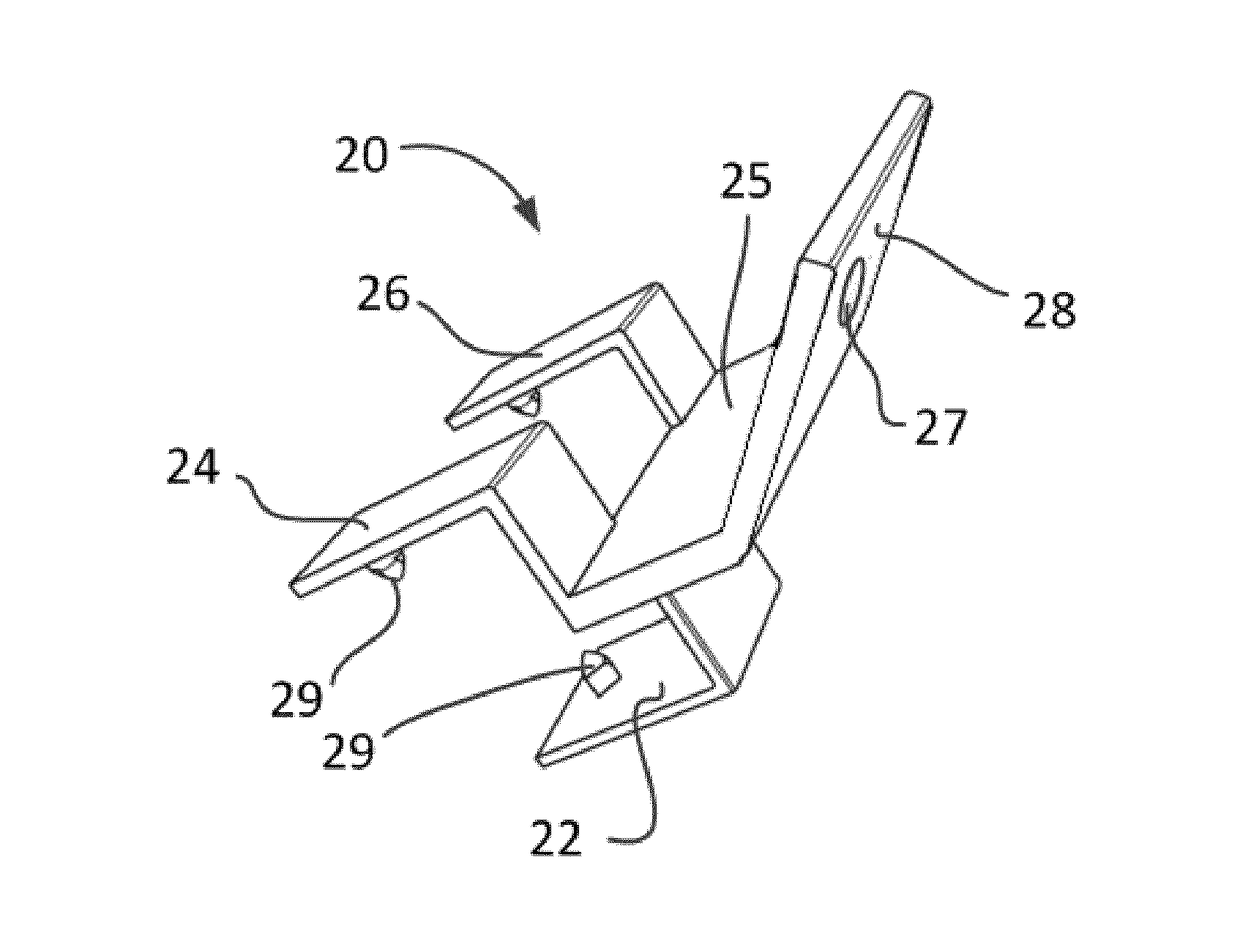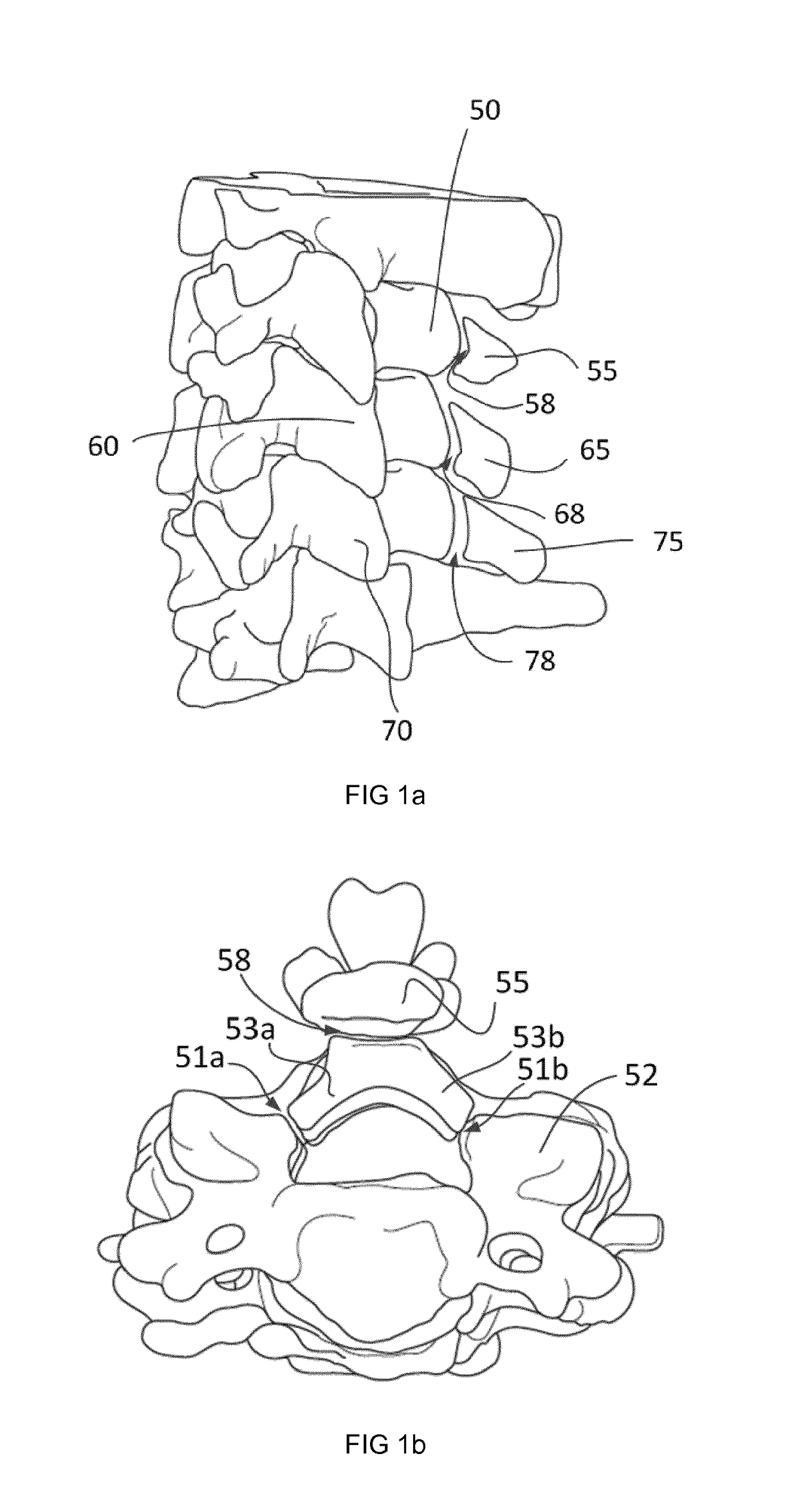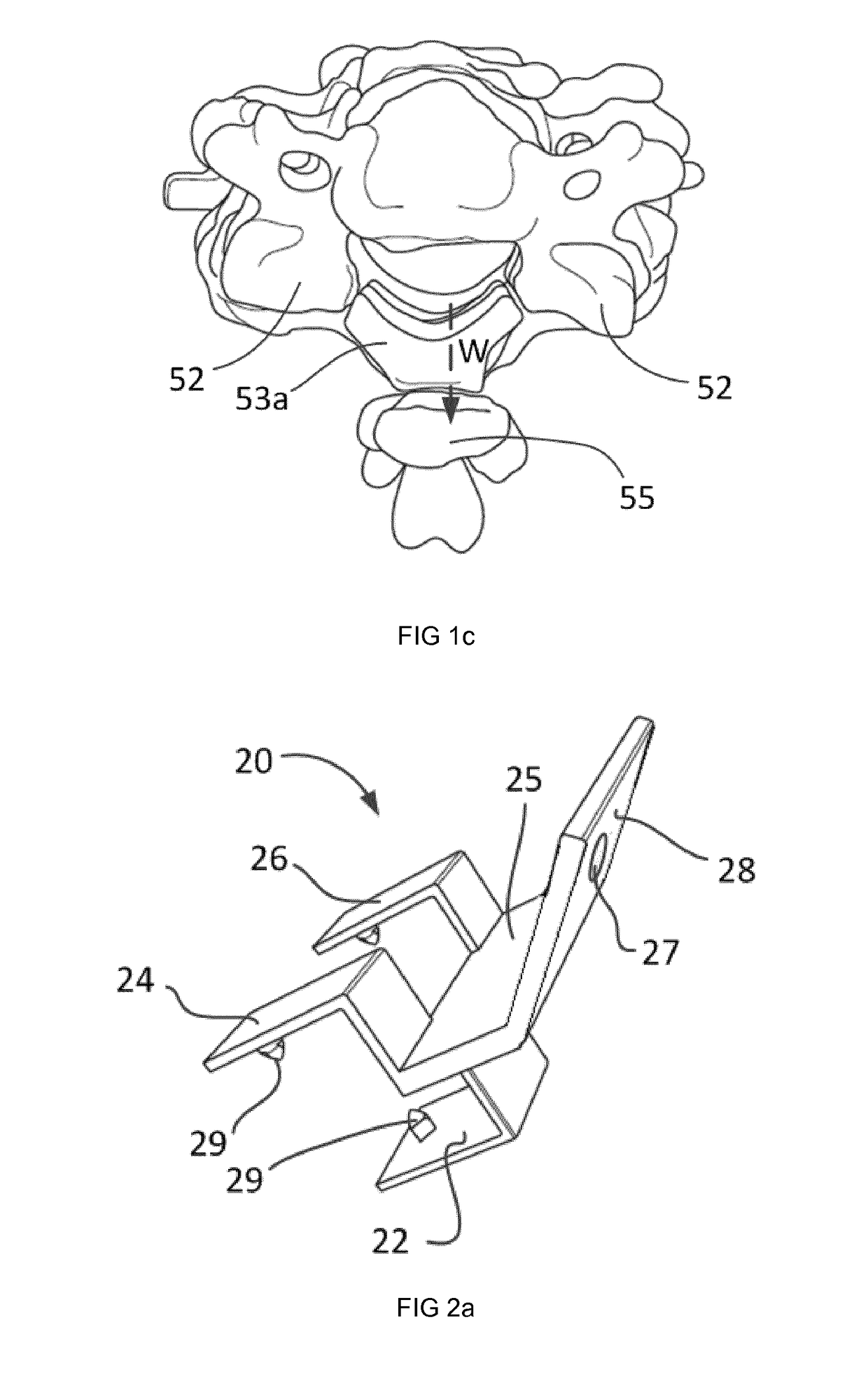Surgical instruments and methods
- Summary
- Abstract
- Description
- Claims
- Application Information
AI Technical Summary
Benefits of technology
Problems solved by technology
Method used
Image
Examples
Embodiment Construction
[0019]FIG. 1 illustrates various steps of an example of a method of surgical treatment of spinal stenosis. FIG. 1a illustrates three cervical vertebrae 50, 60, 70. In a first method step the “domes”55, 65, 75 or apical portions of the spinous process of vertebrae 50, 60, 70 are separated by removing a mid-portion of the spinous process. Removal of the mid-portion of the spinous process may be done using an osteotome adapted to cut in two planes simultaneously. Examples of such osteotomes are described later herein, particularly with reference to FIG. 6a-6e. In an example, approximately one third of the spinous process may be left attached to the laminae, approximately one third may be removed and approximately one third of the spinous process may form the apical portion.
[0020]In FIG. 1a, the separation of the apical portions 55, 65, and 75 from the base of the spinous process and the laminae is schematically illustrated with cuts 58, 68 and 78. In a subsequent step (FIG. 1a, right),...
PUM
 Login to View More
Login to View More Abstract
Description
Claims
Application Information
 Login to View More
Login to View More - R&D
- Intellectual Property
- Life Sciences
- Materials
- Tech Scout
- Unparalleled Data Quality
- Higher Quality Content
- 60% Fewer Hallucinations
Browse by: Latest US Patents, China's latest patents, Technical Efficacy Thesaurus, Application Domain, Technology Topic, Popular Technical Reports.
© 2025 PatSnap. All rights reserved.Legal|Privacy policy|Modern Slavery Act Transparency Statement|Sitemap|About US| Contact US: help@patsnap.com



